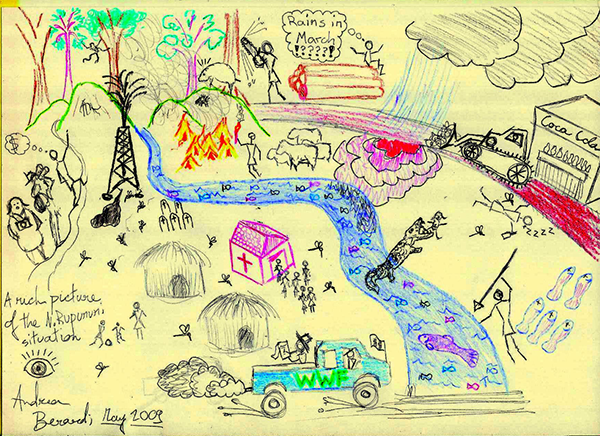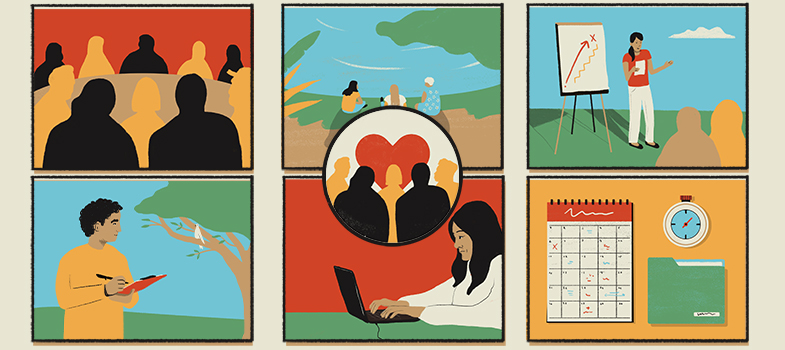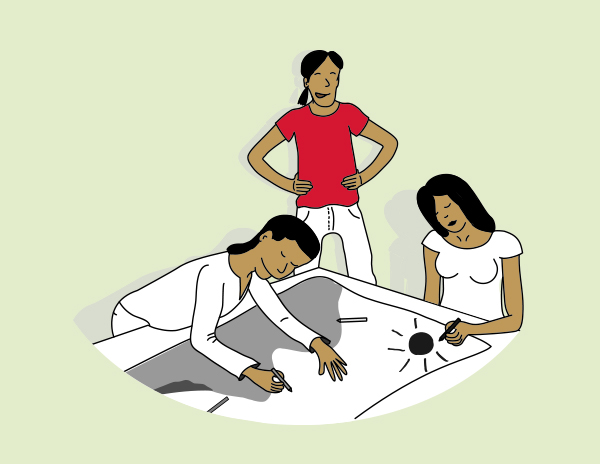Participatory visual techniques
1. Participatory Drawing
What is it?
- Representation of issues or practices through pictures (with or without written text). This is carried out by the participants themselves.
When to use it?
- To answer specific questions, either individually or in a group – creating a drawing can allow people to represent a specific issue/concern.
- Developing storyboards – putting ideas together in the form of a story
This video, created by The Open University, provides an example of how to draw a rich picture to explore a question or a situation.
Benefits.
- Cheap - can be used when only basic materials of pen, pencil and paper are available
- Allows individual expression of ideas, concerns, opinions.
- Group drawing, for example through storyboards, fosters discussion.
Limitations
- Representing ideas through drawings is not always as easy as it sounds. You must give very clear and easy guidance at the beginning.
- Interpretation of drawings is very open and free and its relevance to the project’s objectives is open to you and the participant’s interpretation.
- Participants may be astonished and not really sure of the objectives and the outputs of such an activity.
- People may soon be discouraged if the expected outputs are too high.
This photo is an example of a rich picture showing a community near a river and the threats they face from logging, mining and climate change


